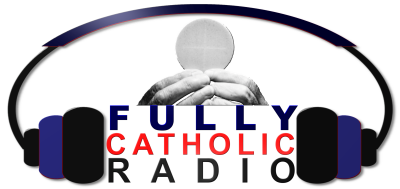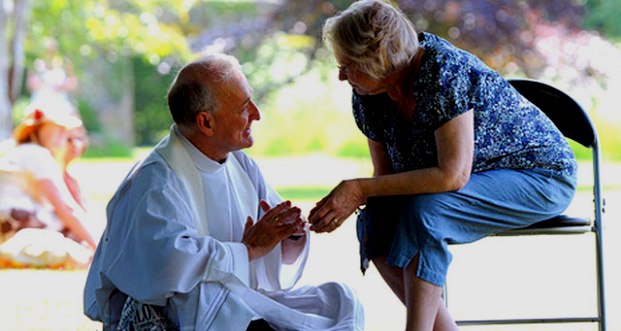The Holy Trinity In The Teaching Of The Faith

The formation of the Trinitarian dogma
From the beginning, the revealed truth of the Holy Trinity has been at the very root of the Church’s living faith, principally by means of Baptism. It finds its expression in the rule of baptismal faith, formulated in the preaching, catechesis and prayer of the Church. Such formulations are already found in the apostolic writings, such as this salutation taken up in the Eucharistic liturgy: “The grace of the Lord Jesus Christ and the love of God and the fellowship of the Holy Spirit be with you all.”
[simpleazon-image align=”right” asin=”0385508190″ locale=”us” height=”500″ src=”http://ecx.images-amazon.com/images/I/41dPgIxCEKL.jpg” width=”274″]During the first centuries the Church sought to clarify her Trinitarian faith, both to deepen her own understanding of the faith and to defend it against the errors that were deforming it. This clarification was the work of the early councils, aided by the theological work of the Church Fathers and sustained by the Christian people’s sense of the faith.
In order to articulate the dogma of the Trinity, the Church had to develop her own terminology with the help of certain notions of philosophical origin: “substance”, “person” or “hypostasis”, “relation” and so on. In doing this, she did not submit the faith to human wisdom, but gave a new and unprecedented meaning to these terms, which from then on would be used to signify an ineffable mystery, “infinitely beyond all that we can humanly understand”.
The Church uses (I) the term “substance” (rendered also at times by “essence” or “nature”) to designate the divine being in its unity, (II) the term “person” or “hypostasis” to designate the Father, Son and Holy Spirit in the real distinction among them, and (III) the term “relation” to designate the fact that their distinction lies in the relationship of each to the others.
The dogma of the Holy Trinity
The Trinity is One. We do not confess three Gods, but one God in three persons, the “consubstantial Trinity”. The divine persons do not share the one divinity among themselves but each of them is God whole and entire: “The Father is that which the Son is, the Son that which the Father is, the Father and the Son that which the Holy Spirit is, i.e. by nature one God.” In the words of the Fourth Lateran Council (1215), “Each of the persons is that supreme reality, viz., the divine substance, essence or nature.”
The divine persons are really distinct from one another. “God is one but not solitary.” “Father”, “Son”, “Holy Spirit” are not simply names designating modalities of the divine being, for they are really distinct from one another: “He is not the Father who is the Son, nor is the Son he who is the Father, nor is the Holy Spirit he who is the Father or the Son.” They are distinct from one another in their relations of origin: “It is the Father who generates, the Son who is begotten, and the Holy Spirit who proceeds.” The divine Unity is Triune.
The divine persons are relative to one another. Because it does not divide the divine unity, the real distinction of the persons from one another resides solely in the relationships which relate them to one another: “In the relational names of the persons the Father is related to the Son, the Son to the Father, and the Holy Spirit to both. While they are called three persons in view of their relations, we believe in one nature or substance.” Indeed “everything (in them) is one where there is no opposition of relationship.” “Because of that unity the Father is wholly in the Son and wholly in the Holy Spirit; the Son is wholly in the Father and wholly in the Holy Spirit; the Holy Spirit is wholly in the Father and wholly in the Son.”
St. Gregory of Nazianzus, also called “the Theologian”, entrusts this summary of Trinitarian faith to the catechumens of Constantinople:
Above all guard for me this great deposit of faith for which I live and fight, which I want to take with me as a companion, and which makes me bear all evils and despise all pleasures: I mean the profession of faith in the Father and the Son and the Holy Spirit. I entrust it to you today. By it I am soon going to plunge you into water and raise you up from it. I give it to you as the companion and patron of your whole life. I give you but one divinity and power, existing one in three, and containing the three in a distinct way. Divinity without disparity of substance or nature, without superior degree that raises up or inferior degree that casts down… the infinite co-naturality of three infinites. Each person considered in himself is entirely God… the three considered together… I have not even begun to think of unity when the Trinity bathes me in its splendour. I have not even begun to think of the Trinity when unity grasps me..
The Divine Works And The Trinitarian Missions.
“O blessed light, O Trinity and first Unity!” God is eternal blessedness, undying life, unfading light. God is love: Father, Son and Holy Spirit. God freely wills to communicate the glory of his blessed life. Such is the “plan of his loving kindness”, conceived by the Father before the foundation of the world, in his beloved Son: “He destined us in love to be his sons” and “to be conformed to the image of his Son”, through “the spirit of sonship”. This plan is a “grace [which] was given to us in Christ Jesus before the ages began”, stemming immediately from Trinitarian love. It unfolds in the work of creation, the whole history of salvation after the fall, and the missions of the Son and the Spirit, which are continued in the mission of the Church.
The whole divine economy is the common work of the three divine persons. For as the Trinity has only one and the same natures so too does it have only one and the same operation: “The Father, the Son and the Holy Spirit are not three principles of creation but one principle.” However, each divine person performs the common work according to his unique personal property. Thus the Church confesses, following the New Testament, “one God and Father from whom all things are, and one Lord Jesus Christ, through whom all things are, and one Holy Spirit in whom all things are”. It is above all the divine missions of the Son’s Incarnation and the gift of the Holy Spirit that show forth the properties of the divine persons.
Being a work at once common and personal, the whole divine economy makes known both what is proper to the divine persons, and their one divine nature. Hence the whole Christian life is a communion with each of the divine persons, without in any way separating them. Everyone who glorifies the Father does so through the Son in the Holy Spirit; everyone who follows Christ does so because the Father draws him and the Spirit moves him.
The ultimate end of the whole divine economy is the entry of God’s creatures into the perfect unity of the Blessed Trinity. But even now we are called to be a dwelling for the Most Holy Trinity: “If a man loves me”, says the Lord, “he will keep my word, and my Father will love him, and we will come to him, and make our home with him”.
O my God, Trinity whom I adore, help me forget myself entirely so to establish myself in you, unmovable and peaceful as if my soul were already in eternity. May nothing be able to trouble my peace or make me leave you, O my unchanging God, but may each minute bring me more deeply into your mystery! Grant my soul peace. Make it your heaven, your beloved dwelling and the place of your rest. May I never abandon you there, but may I be there, whole and entire, completely vigilant in my faith, entirely adoring, and wholly given over to your creative action.
To Summarize:
The mystery of the Most Holy Trinity is the central mystery of the Christian faith and of Christian life. God alone can make it known to us by revealing himself as Father, Son and Holy Spirit.
The Incarnation of God’s Son reveals that God is the eternal Father and that the Son is consubstantial with the Father, which means that, in the Father and with the Father the Son is one and the same God.
The mission of the Holy Spirit, sent by the Father in the name of the Son (John 14:26) and by the Son “from the Father” (John 15:26), reveals that, with them, the Spirit is one and the same God. “With the Father and the Son he is worshipped and glorified” (*Nicene Creed).
“The Holy Spirit proceeds from the Father as the first principle and, by the eternal gift of this to the Son, from the communion of both the Father and the Son” (St. Augustine, De Trin. 15, 26, 47: *PL 42, 1095).
By the grace of Baptism “in the name of the Father and of the Son and of the Holy Spirit”, we are called to share in the life of the Blessed Trinity, here on earth in the obscurity of faith, and after death in eternal light (cf. Paul VI, *CPG # 9).
“Now this is the Catholic faith: We worship one God in the Trinity and the Trinity in unity, without either confusing the persons or dividing the substance; for the person of the Father is one, the Son’s is another, the Holy Spirit’s another; but the Godhead of the Father, Son and Holy Spirit is one, their glory equal, their majesty coeternal” (Athanasian *Creed: *DS 75; *ND 16).
Inseparable in what they are, the divine persons are also inseparable in what they do. But within the single divine operation each shows forth what is proper to him in the Trinity, especially in the divine missions of the Son’s Incarnation and the gift of the Holy Spirit.
ccc 249 – 267



